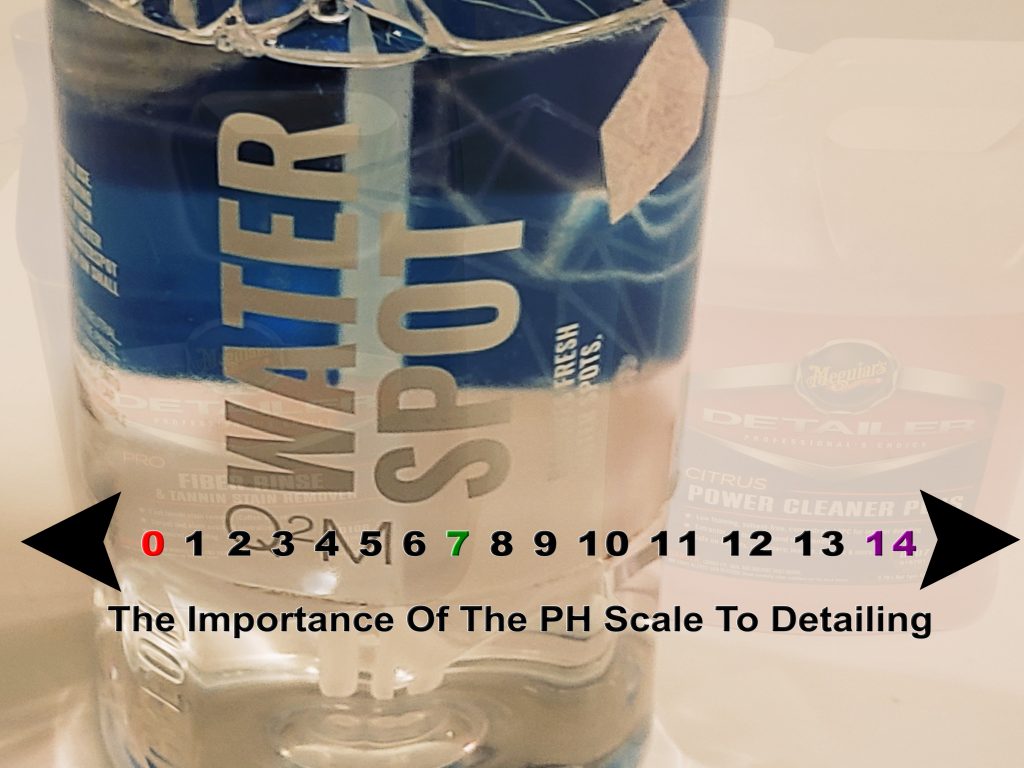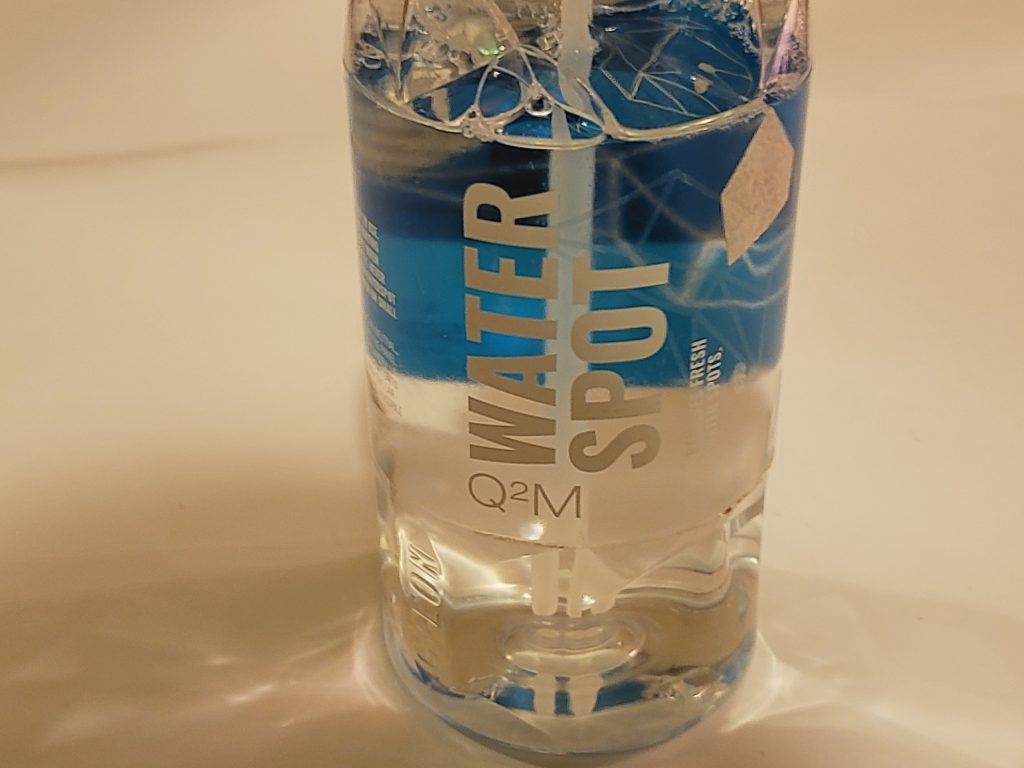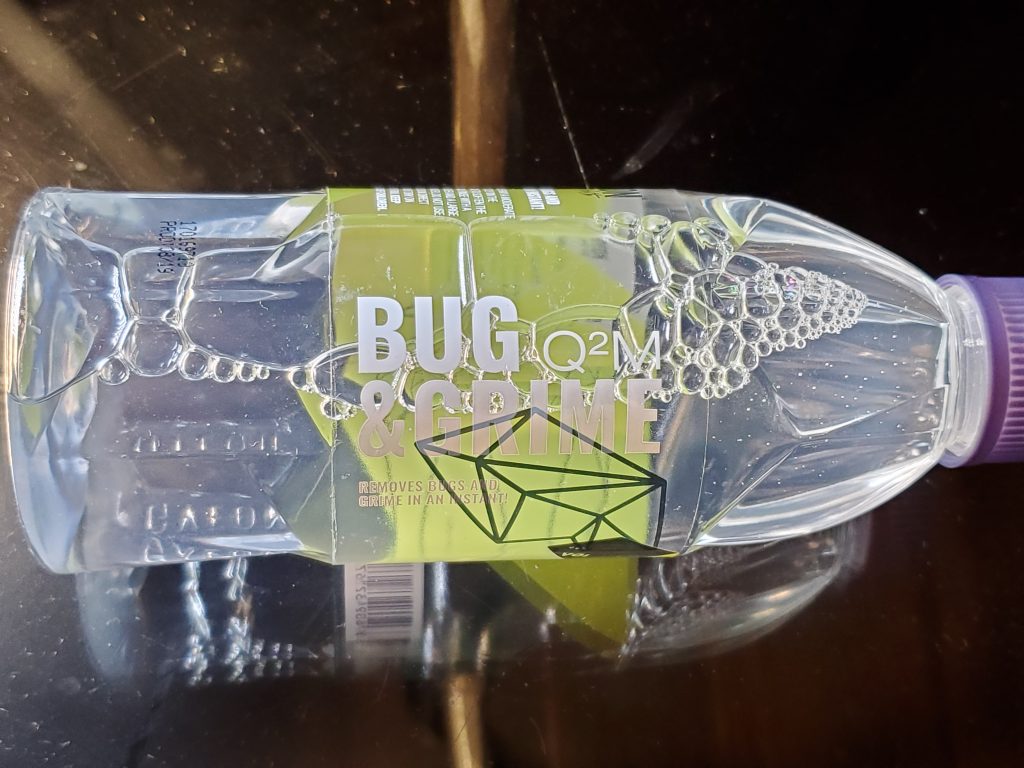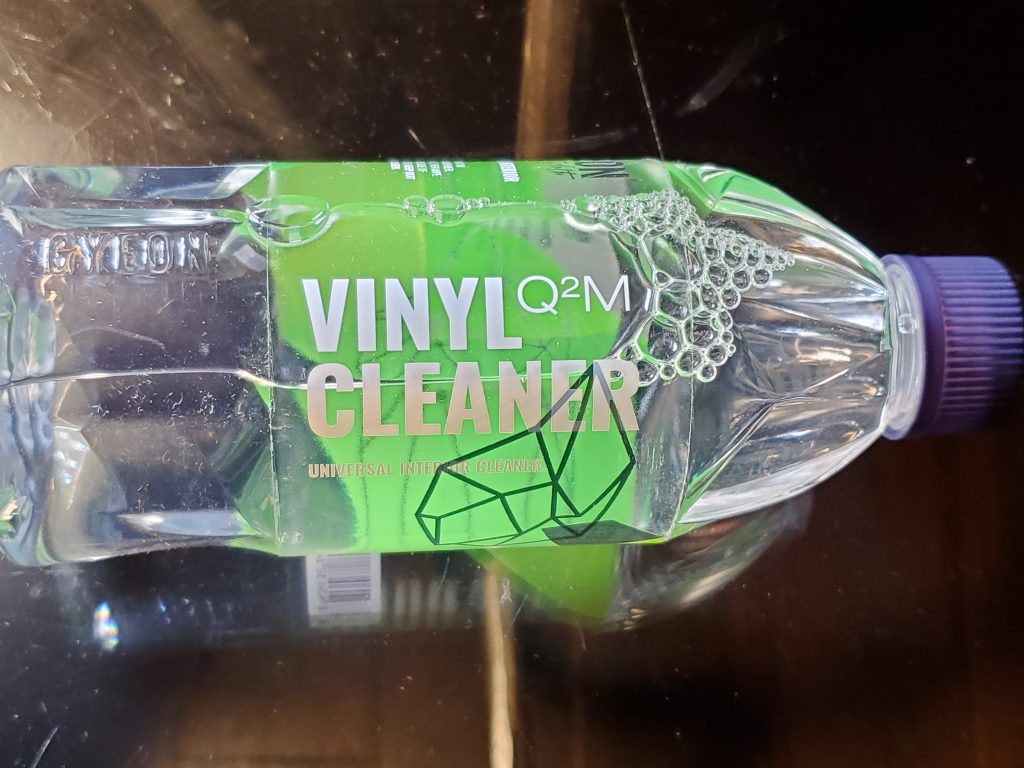Importance Of The PH Scale To Detailing: Part 1 – What Is It And Its Place In Detailing
by Rodney TatumDialogue of the cost per ounces of a product has become much more popular than the question of should this product be used in my working environment. When we think about what detailing really is, in essence, it is the cosmetic car care of a vehicle (emphasis on the word ‘care’). This is part 1 of a three-part series in which I cover the PH Scale.

A fellow detailer and friend shared his experience assisting an automotive entertainment and paint protection customization shop with detailing prep work. He told me a representative of their company suggested he spray wheel acid on matte wheels for a more thorough cleaning (which he declined). Matte colored wheels are artfully designed to be absent of gloss, meaning any polishing to remove damage would only make the appearance of the wheels worse. As many people know of the dangers of using harsh chemicals on matte paint, there are even more so, in and out of the detailing industry, who are only focused on the general cleaning power of a product. For everyone reading these 3 articles, hopefully, you will develop a new appreciation for the appropriate use of cleaning products in and out of the realm of the detailing industry. I also hope for those that put the cosmetic care of their car in someone’s hands that these articles will provide you the tools to better screen for the right detailers in your region. The PH scale plays a big role in knowing what products to safely use while achieving desirable results.
What is PH?
PH is an abbreviation for the phrase ‘Potential of Hydrogen’. PH is the measure of acidity and alkalinity of a substance on a scale of 0 to 14. 7 would be at PH neutral. Measured in powers of 10, the acidity of a substance increases from 6 to 0. The alkalinity respectively increases, in powers of 10, from 8 to 14.
PH and Cleaning
Acidic cleaners are used to clean non-water-soluble materials. Acidic cleaners work by creating chemical reactions allowing the material to be released from a substrate. Minerals deposits are often cleaned by acidic cleaners.
Alkaline Cleaners work by dissolving materials like greases and oils. Most of your cleaners will tend to be slightly more alkaline as they solve the majority of your general cleaning problems.
Using products that are further away from neutral on the PH scale will tend to have an effect on ease of effective use and overall safety of use on sensitive material. Essentially products that are at or are very close to 0 or 14 can much more easily damage the material and also be more dangerous to your health. When performing detailing activities, some alkalinity or acidity may be important or necessary to get the job done. Products that are at or are closer to PH 7 are generally easier to work with and less likely to cause damage to a vehicle in the short and long run.

Gyeon Waterspot is in the area of 4 to 5 on the PH scale. Gyeon Waterspot is designed to address topical waster spots on your automotive paint. Sonax Multi-Star Cleaner, an all-purpose cleaner, is alkaline (PH 11). Sonax Multi-Star is a more aggressive cleaner but safer on a majority of automotive surfaces than most cleaners with an even higher PH number. Sonax Interior (PH 8-9), designed for fabrics, is very mildly alkaline, closer to PH Neutral than Sonax Multi-Star. Gyeon Bug & Grime, created to help loosen up bug guts for safer and more effective cleaning, has a PH of 9. Gyeon Vinyl Cleaner is PH Neutral. Gyeon Vinyl cleans a variety of sensitive of automotive interior plastics. These products, distinct in chemistry, were created to solve unique problems.


A High Quality Product Selection
- Gyeon WaterSpot
- Sonax Multi-Purpose Auto Interior Cleaner
- Sonax MultiStar Cleaner
- Gyeon Bug & Grime
- Gyeon Vinyl Cleaner
- Gyeon Tire Cleaner
Think of all of the times you have washed dishes using dishwashing soap. As effective as it is with a sponge and water on dishes, you probably do not want to put a cup of dawn in your dishwasher. Not every product is appropriate for every environment or situation. Products that have ingredients that will spike the alkalinity or acidity of a product close to 0 or 14 respectively exist for a reason. Ingredients like Hydrochloric Acid (PH 0) or Sodium Hydroxide (PH 14) that are in some cheaper cleaning products can potentially create faster, cheaper, and more dramatic cleaning results. The potential benefits of these products also come with the potential of permanent damage with short and long term use. I will touch on these issues in the next 2 articles.
Related Posts
- Importance Of The PH Scale To Detailing : Part 3 – All Purpose Cleaners
- Importance Of The PH Scale To Detailing : Part 2 – Debunking Wisetales Of Using Household And Cheap Auto Detailing Cleaners
- Bioworx & What it Means to be Bio-Based
- 8 Tips to Get the Most Value When Selling a Vehicle by Detailing
- Bioworx – Lineup Breakdown








Great article! Everyone took science in high school, but sometimes we need a refresher. I had the scale backwards in my head from 0-14.
Thanks!
Solid information there Rodney! Thanks for taking the time to share.
Here are a few additional notes as to why understanding pH value is important in detailing:
· When the pH value is safe at a given temperature/dwell time, it is considered “non-reactive”. On the other hand, if it causes damage, the chemical is considered “reactive”. When detailing, it’s vital to stay in that “non-reactive” zone!
· The value of pH indicates strength of the alkaline/base or acid. For each full increase in value (for instance going from an 8 to a 9), the strength of the alkaline/base in multiplied by 10! The same remains true for acids. When you do the math you can quickly understand why having a grasp of the subject should be important to anyone wishing to operate within that “non-reactive” area.
Thank you for your praise and added contributions sir. Sorry for my late reply.
Great article. So what does it mean when a product gives you a tolerance scale? Such as a car product which is a fabric coat that provides a PH TOLERANCE: 2-11, does this mean mean that products that fall between the 2-11 on the PH scale the fabric will be protected. Therefore items such as battery acid (PH 0) and bleaches (PH 13.5) would penetrate the fabric coat? And I’m a fan of those Gyeon products that are in your article.